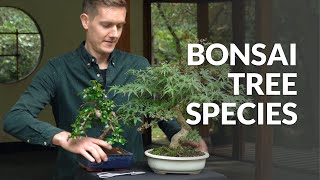Baobab Bonsai Care guidelines
The Baobab always needs a warm environment and is very sensitive to cold temperatures. It must be taken into the house as soon as the temperatures fall below 12° C / 54° F. If you can't provide a place with at least six hours of full sunlight a day, it is advisable to use grow lights and keep them shining on the baobab tree for 16 hours a day.
Baobabs can store water in their trunks and only need to be watered about once a month during the growing season. When they are dormant, don't water them at all. Too much watering can cause root rot and kill the tree. Continue reading about watering Bonsai trees.
Watering
Free lecture from the Beginners CourseFeed the baobab with liquid fertilizer every month in half concentration when it is time to water. Too much fertilizer can damage the roots.
The branches of the baobab can be pruned at any time. Cut the ramification back in shape before the new leaves appear. New shoots can be trimmed when they grow too long. Younger branches and twigs can be wired if necessary, but most styling should be done with scissors. Continue reading about pruning Bonsai trees.
Repot the baobab every two years in spring. Prune the roots by one third and remove all damaged or dead roots. Use a well-draining soil mix with some humus. Continue reading about repotting Bonsai trees.
The baobab Bonsai is easily propagated from seed, but can also be grown from cuttings. For more detailed information on these techniques, try our Bonsai tree care section.
Aphids and spider mites can attack the baobab, especially when it is kept in the house. Use a specific pesticide as soon as you discover these pests. For more detailed information on these techniques, check out our Bonsai tree care section.

Baobab Bonsai (Adansonia digitata), photo by Balconygardenweb
General information about the Baobab Bonsai tree
The grey-brown bark is between five and ten centimeters thick and can protect the tree from minor bush fires. The branches are strong and clunky and carry a wide canopy. Without leaves, the crown looks like a root system which has contributed to the legend that the devil has planted the baobab tree upside down. Baobabs drop their leaves periodically and produce new foliage shortly before the start of the rainy season. First simple elliptic leaves appear and after a short time they fall off again, followed by hand-shaped leaves with 5 to 9 leaflets. Older trees can produce large white flowers which hang from the branches on long stalks. The flowers have an unpleasant smell. Baobab fruits are edible.
For bonsai, the baobab is an unusual but very interesting species which is not difficult to care for if its basic needs are fulfilled. As a pot plant or bonsai tree the baobab grows very slowly and it can take many years to make good progress. If you need help identifying your tree, take a look at our Bonsai tree identification guide.





